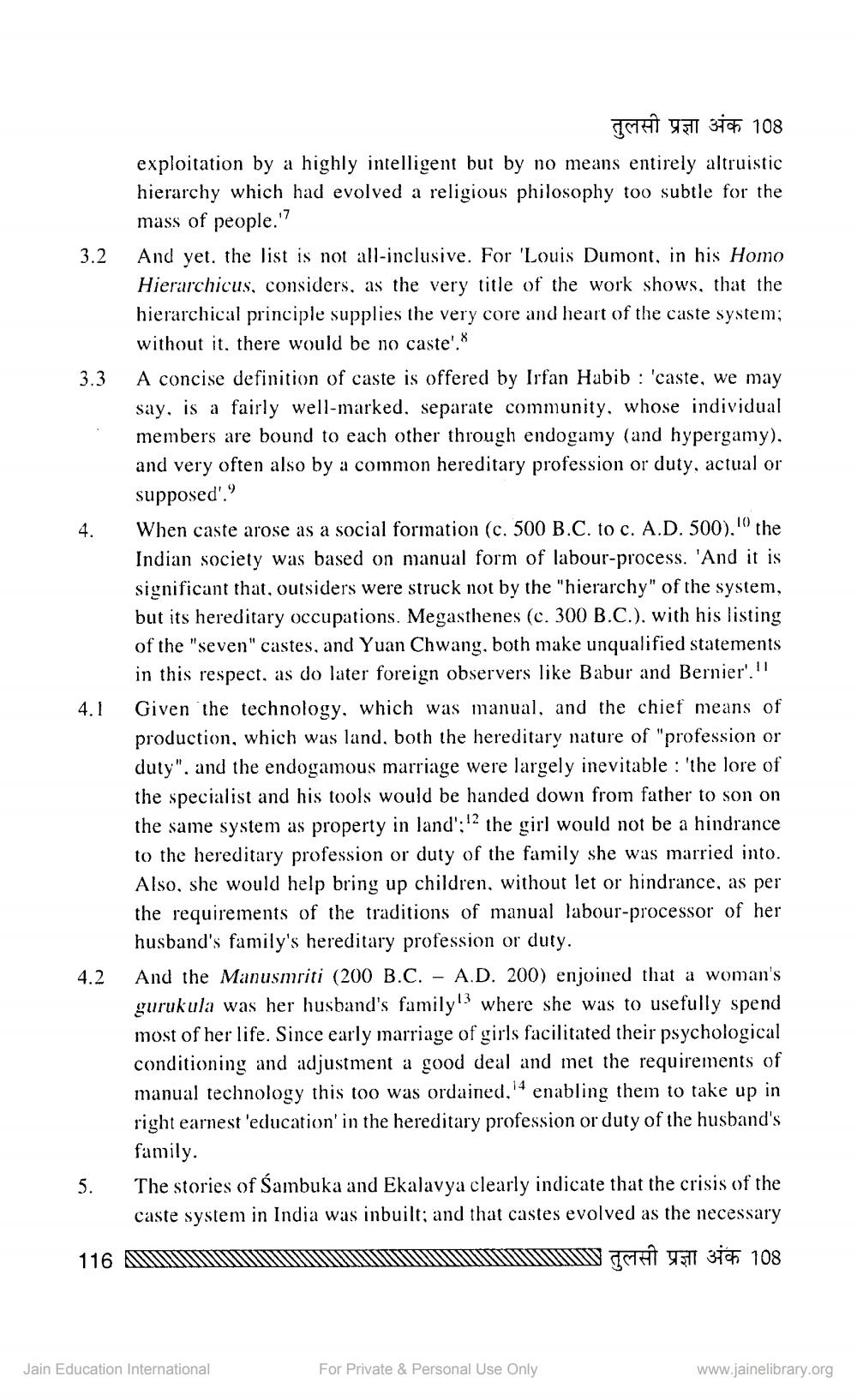________________
TAHU YETI 310 108 exploitation by a highly intelligent but by no means entirely altruistic hierarchy which had evolved a religious philosophy too subtle for the
mass of people..7 3.2
And yet, the list is not all-inclusive. For 'Louis Dumont, in his Homo Hierarchicus, considers, as the very title of the work shows, that the hierarchical principle supplies the very core and heart of the caste system;
without it, there would be no castel.: 3.3 A concise definition of caste is offered by Irfan Habib : 'caste, we may
say, is a fairly well-marked, separate community, whose individual members are bound to each other through endogamy (and hypergamy). and very often also by a common hereditary profession or duty, actual or supposed'.' When caste arose as a social formation (c. 500 B.C. to c. A.D. 500)." the Indian society was based on manual form of labour-process. 'And it is significant that, outsiders were struck not by the "hierarchy" of the system, but its hereditary occupations. Megasthenes (c. 300 B.C.), with his listing of the "seven" castes, and Yuan Chwang, both make unqualified statements in this respect, as do later foreign observers like Babur and Bernier'." Given the technology, which was manual, and the chief means of production, which was land, both the hereditary nature of "profession or duty". and the endogamous marriage were largely inevitable : 'the lore of the specialist and his tools would be handed down from father to son on the same system as property in land';!2 the girl would not be a hindrance to the hereditary profession or duty of the family she was married into. Also, she would help bring up children, without let or hindrance, as per the requirements of the traditions of manual labour-processor of her
husband's family's hereditary profession or duty. 4.2 And the Manusmriti (200 B.C. - A.D. 200) enjoined that a woman's
gurukula was her husband's family 13 where she was to usefully spend most of her life. Since early marriage of girls facilitated their psychological conditioning and adjustment a good deal and met the requirements of manual technology this too was ordained. 14 enabling them to take up in right earnest education' in the hereditary profession or duty of the husband's
family. 5. The stories of sambuka and Ekalavya clearly indicate that the crisis of the
caste system in India was inbuilt; and that castes evolved as the necessary 116 ADDITION WV M I JAHT UFI 3ich 108
1919
Jain Education International
For Private & Personal Use Only
www.jainelibrary.org




